Do you work with any students who aren’t yet reading at grade level?
In my previous blog post, I explained that we can help lower readers bridge the gap by having them read challenging text (including grade-level texts).
(If you haven’t read that post yet, you may want to start there!)
But as I said in that post, we can’t just hand them grade-level text and expect miracles.
We need to provide careful scaffolding in a small group setting.
In today’s post, I’ll explain exactly how to create that scaffolding!
These strategies are flexible too. They can:
- Help your lower readers successfully read challenging text
- Support students who are learning English
- Help ANY students (not just your lowest readers) tackle more challenging text
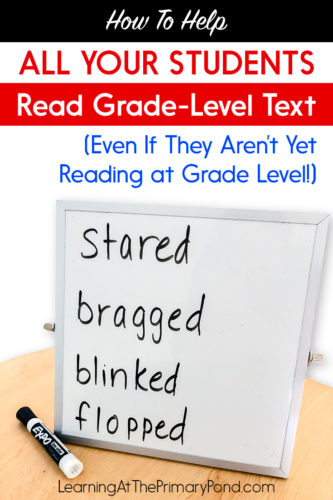
(Sidenote to my first & second grade literacy club members – this post will also help you use your monthly passages even when you have students who don’t fall precisely at one of the provided passage levels!)
—-
There are many different strategies you can use to help lower readers successfully decode and comprehend grade-level text.
In this article, I’m going to focus on strategies for primary students (Kindergarten, first grade, and second grade).
But you can also adapt many of these concepts to help more advanced readers!
And, as I mentioned earlier in this post, you can use these strategies to help any reader tackle text that’s above his/her independent or instructional reading level.
Strategy 1: Discuss and break apart tricky words before students read.
Before the lesson, read the text. Make a list of words that you anticipate students will struggle with.
Typically, these will be words that they’ll struggle to decode. But they can also be tricky / new vocabulary words, or a combination thereof!
Write the words on index cards or on a piece of paper (make sure the print will be large enough for all students in the group to read). Or you might even type up a list of the words for your students.
Then, toward the beginning of your small group lesson, go over all of or most of these words with students.
Write each word on the whiteboard, one at a time (or show one index card at a time).
Model how you break up the word to read it. Depending on your students and what you’re working on, you might model:
- Saying the sounds of the word and blending it together
- Looking for a word family and using the word family to read the word
- Looking for known word parts or chunks (like “-ing”)
- Breaking up the word into its syllables
Keep your modeling quick. This is not an all-out decoding lesson! If you’ve selected a word that doesn’t follow phonics rules, point that out to students.
After you read each word, have students read it. Then, once you’ve gone through all the words, have students read them all again, preferably two times.
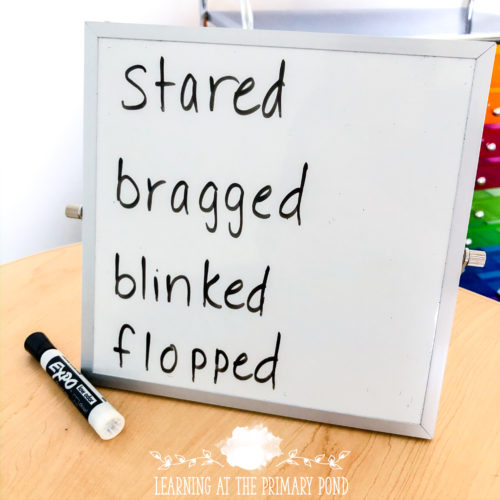
(By the way, if you end up with way too many words to discuss in a few minutes, consider shortening the amount of text students will be reading during the lesson!)
Strategy 2: Pull out a few challenging sentences to have students practice beforehand.
In addition to discussing tricky words, you might also help students become “masters” at reading a few sentences in the text.
Choose 2-4 “tricky” sentences in the text. These sentences may be longer than other sentences in the text, contain tricky words, or include important vocabulary words.
Type up the sentences or write them on sentence strips. (You can also just highlight or use a sticky note to mark them directly in the texts that students will use.)

Then, during the lesson (after you’ve used Strategy 1), direct students’ attention to one of the sentences. Model reading it aloud. Then, read it chorally with students. Then, have students read it on their own.
If you discuss anything about the sentence, keep that discussion brief. Your main goal here is simply to get students familiar with the sentence so that it’s easier for them to decode once you give them the text.
Repeat this process with the other sentences you chose.
This activity increases their confidence going into the text. It also helps with fluency and high frequency word learning.
Strategy 3: Provide background information on the content of the text.
A reader’s ability to comprehend a text (and even decode it, to a small degree) largely depends on his or her background knowledge.
The more the reader knows about the topic, the easier it is for him/her to comprehend the text.
We usually think about background knowledge for nonfiction text. But I think it applies to fiction too!
For example, if a student is reading a book about a girl who rides horses, the more the student knows about horses and stables, the better she’ll be able to comprehend the text.
So when it comes to helping our students tackle challenging texts, we often need to build their background knowledge.
There are many ways to do this, but here are a few suggestions:
- Show a quick YouTube clip that relates to the text
- Engage students in a discussion (you might launch the discussion by showing them a photograph or image about the topic)
- Read students a different text (something short, like a free article from ReadWorks.org)
Strategy 4: During the first read, read part of (or all of) the text with the students.
If you feel that strategies 1-3 will provide your students with enough support, great! Let them begin reading.
However, if you still think that students will struggle — or you have them start reading and discover that they’re really struggling — you can still provide more support.
You can read all of or part of the text to them and/or with them.

If students need a LOT of help, consider an echo read. In an echo read, you read a chunk of the text, and then students read it. (This can be a page, for shorter, simpler texts, or a paragraph, for longer texts.) Once you’ve “echoed” the entire text, or part of the text, students go back and read it completely on their own.
For a little less support, try a choral read, where you and the students read aloud the text together. After the choral read is finished, students go back and read the text entirely on their own.
For even less support, try a teacher pre-read, where you read part of or all of the text aloud to students, and then have them read it on their own.
Strategy 5: If you’re working with a longer text, break it up into smaller chunks. Read and discuss just one chunk at a time.
If a text is challenging for students, consider tackling it over more than one lesson! OR if you’re working with an article or something that you print out, consider removing parts of the text completely.
Comprehension is easier for students when you work with smaller amounts of text. You may need to have students read a chunk, then discuss it, read more, discuss it, etc.
This is especially helpful with nonfiction texts, where multiple ideas are contained in just a single sentence.
For example, take this sentence: Hippos are large, semi-aquatic mammals.
The author is telling us that hippos:
- Are large
- Are mammals
- Are semi-aquatic — which requires the reader to know what “semi” and “aquatic” mean
That’s a lot for a simple sentence! So imagine what it’s like for students to read many of those sentences in one text.
Break up the text, and they’re more likely to be successful.
Strategy 6: Have students reread the text multiple times!!
If you’ve helped students get through a text once, great. But that’s not enough!
Your students need a chance to feel comfortable with the text! And confident!
So have your students re-read the text several more times.
Some of the re-reads can take place in your small group, but they can also take place during independent reading, centers, Daily 5, etc.
Re-reading is great for helping improve reading fluency too!
If you need leveled texts for small group that your students can also re-read on their own, check out my leveled books at this link. Since these leveled readers can be printed (or shared digitally, depending upon which set you choose), students can keep their copies!
This makes it easier, logistically, for re-reading to happen, because you don’t have to worry as much about students losing a text. (This is always a worry of mine when I’m borrowing from the school book room!)
I also have lots of decodable texts that you can check out at this link.
Conclusions
These strategies might seem like a lot to squeeze into one small group lesson! But remember…
- You don’t have to use all the strategies with every text
- You can read just part of a text during one lesson
I hope these strategies help you support your students with challenging texts — and help your lower readers “bridge the gap!”
If you’d like to learn more about supporting struggling readers, check out this post next.
Happy teaching!

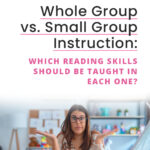
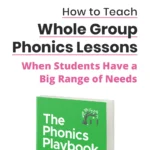
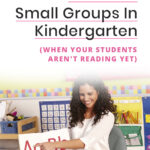
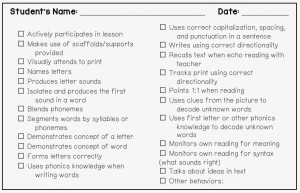

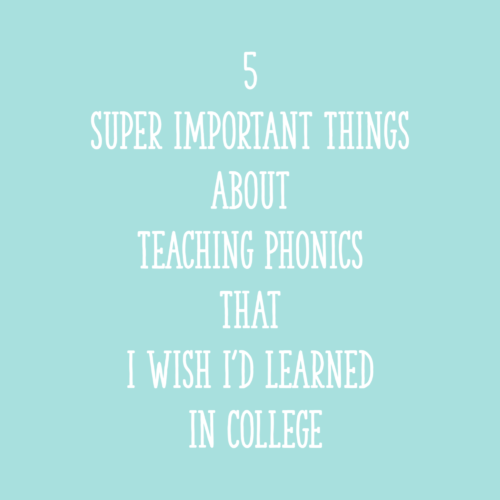






This is an awesome read! Thank you!
Thank you, Shawn! I’m glad that you enjoyed reading it! 🙂